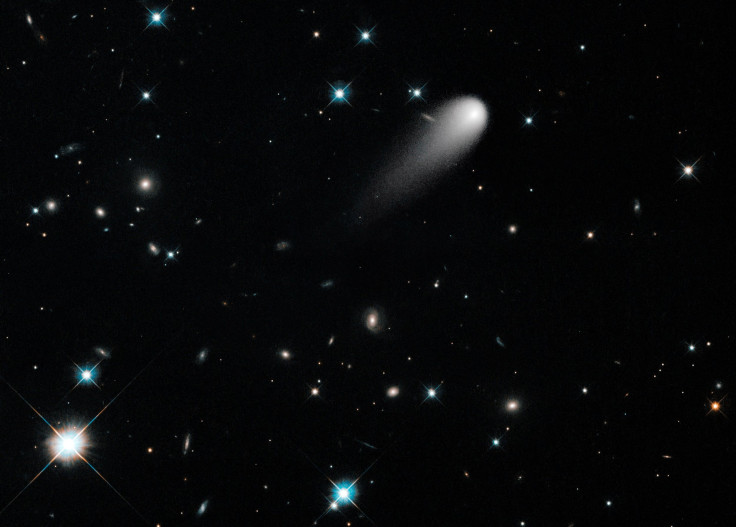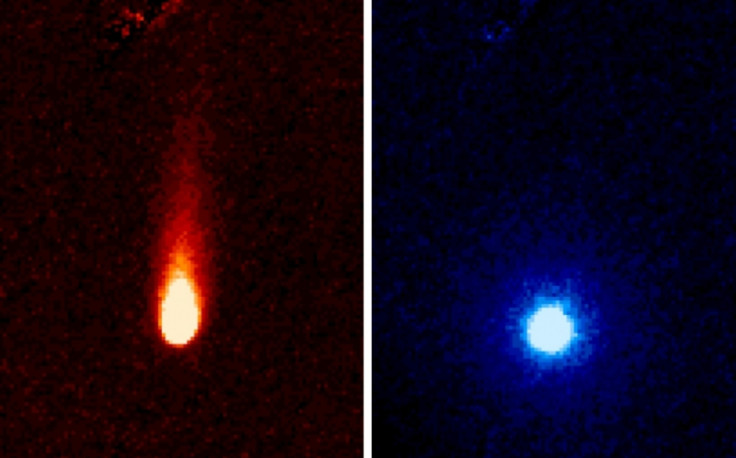NASA Telescope Captures Gas, Dust Emitting Comet ISON, Which Will Visit Inner Solar System In November

Comet ISON, which will pass through the inner solar system later this year, has been observed emitting huge amounts of gas and dust by astronomers using NASA's Spitzer Space Telescope.
The images of ISON, which is expected to pass within 724,000 miles of the sun on November 28, captured by Spitzer's Infrared Array Camera on June 13, showed that gas and dust were slowly and steadily "fizzing" away from the comet’s tail, which is about 186,400 miles long. The comet is warming up gradually as it gets closer to the sun, and in the process, different gases are heating up to the point of evaporation.
"We estimate ISON is emitting about 2.2 million pounds of what is most likely carbon dioxide gas and about 120 million pounds of dust every day," Carey Lisse, leader of NASA's Comet ISON Observation Campaign, said in a statement on Tuesday.

"Previous observations made by NASA's Hubble Space Telescope and the Swift Gamma-Ray Burst Mission and Deep Impact spacecraft gave us only upper limits for any gas emission from ISON. Thanks to Spitzer, we now know for sure the comet's distant activity has been powered by gas,” Lisse, who is a senior research scientist at the Johns Hopkins University Applied Physics Laboratory in Laurel, Md., said.
ISON, which is also called the “soda-pop comet,” was about 312 million miles away from the sun, when astronomers made the observations, according to NASA.
The comet ISON was discovered on Sept. 21, 2012, roughly between Jupiter and Saturn, by Vitali Nevski and Artyom Novichonok at the International Scientific Optical Network near Kislovodsk in Russia. The comet, about the size of a small mountain, is less than 3 miles in diameter and weighs between 7 billion and 7 trillion pounds, according to NASA.
Officially known as C/2012 S1, ISON is like a dirty snowball, which is made of dust and frozen gases such as water, ammonia, methane and carbon dioxide -- the fundamental building blocks that helped form planets 4.5 billion years ago, according to scientists.
“ISON is very exciting. We believe that data collected from this comet can help explain how and when the solar system first formed,” James L. Green, NASA's director of planetary science in Washington, said in the statement.
© Copyright IBTimes 2024. All rights reserved.






















